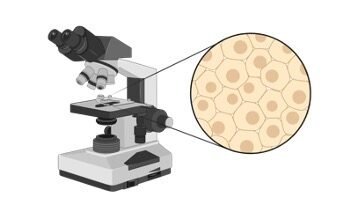Table of Contents
Photoautotroph Definition
The organisms that can make their energy in presence of light and carbon dioxide are known as photoautotrophs. The process of preparing their own food is called photosynthesis. The word photoautotroph is made by two words, photo + autotroph.
The word photo means light and the autotroph word is used for the organisms that make their own food. Examples of photoautotrophs are green plants and photosynthetic bacteria. However, they are different from photoheterotrophs, which also make energy in presence of light but do not use carbon dioxide and instead use organic materials.
Photoautotroph Function
Photoautotrophs can reproduce and survive because they make their own food. However, heterotrophs also require food for survival but they obtain nutrients and energy from other organisms.
Heterotrophs consume autotrophs such as plants provide food for cattle and then humans consume the cattle. In the food chain, the autotrophs remain at the bottom and provide food for other organisms.
In any ecosystem, photoautotrophs have a significant role. Since the nutrients required by organisms to survive are produced by plants, thus they are also called producers of the food chain. Humans and other animals would not survive without the existence of plants because they would not have food.
Another important role of photoautotrophs is they fix atmospheric carbon dioxide, which is a byproduct of respiration in heterotrophs. In addition, they also give off oxygen as a result of photosynthesis, which is used by all heterotrophs and is vital for their survival.
Types of Photoautotroph
i. Green Plants
All the green plants are photoautotrophs, however, there are some exceptions such as the Indian Pipe. In this category, all the plants including grasses, mosses, and trees are included. In terrestrial ecosystems, plants are the major source of food.
They contain a photosynthetic pigment, chlorophyll in organelles named chloroplasts within their cells. Thus they can make their own energy by using light and carbon dioxide. The light is absorbed by the chlorophyll and light energy is transferred into parts of the plants.
The green color of leaves is also due to chlorophyll. Indian Pipe cannot produce chlorophyll, thus it cannot produce its own energy from light, and to obtain nutrients, it lives as a parasite in certain species of trees.
ii. Bacteria
Some photosynthetic bacteria are also able to make their food such as cyanobacteria or blue-green algae. Cyanobacteria also produce chlorophyll. In fact, it is also thought that plants were originated from blue-green algae.
Millions of years ago, cells engulf cyanobacteria where these bacteria make food for those cells and in return get a place to live. This means that the chloroplasts in plant cells are actually cyanobacteria.
The chloroplasts are copies of the cyanobacteria that reproduce asexually. Other photosynthetic bacteria are green sulfur bacteria, which is ecologically similar to cyanobacteria but instead of water, it uses sulfide ions during photosynthesis.
iii. Algae
There are many forms of algae, such as single-celled or multicellular algae. In aquatic ecosystems, algae are the major producers however they are absent in terrestrial ecosystems.
All algal species are thought to derive from different ancestors thus only some species perform photosynthesis. Algae also produce a large proportion of oxygen even half of the total atmospheric oxygen is produced by algae. Sometimes algae also disrupt the ecosystem if it flourishes too much.
Algae produce certain toxins and make nutrients less available for other aquatic organisms. Often human activities are also responsible for algal blooms. The use of nitrogen-containing fertilizers and improper treatment of wastewater are some major causes.
However, algae also fix atmospheric carbon dioxide and in the future, it may be able to use as a source of biofuel in place of fossil fuels.
Photoautotroph vs Chemoautotrophs
Another type of autotroph is chemoautotrophs. They are also able to make their own food like photoautotrophs but instead of light energy, they use chemical energy. Thus, they can easily survive in light deficient conditions or absence of sunlight, such as the deep ocean floor. Nitrogen-fixing bacteria and iron-oxidizing bacteria are some examples of chemoautotrophs.
Photoautotroph Citations
- Impacts of Micro- and Nanoplastics on Photosynthesis Activities of Photoautotrophs: A Mini-Review. Front Microbiol . 2021 Nov 17;12:773226.
- A review on the progress, challenges and prospects in commercializing microalgal fucoxanthin. Biotechnol Adv . 2021 Dec;53:107865.
- Photosynthetic adaptation to polar life: Energy balance, photoprotection and genetic redundancy. J Plant Physiol . 2022 Jan;268:153557.
Share












